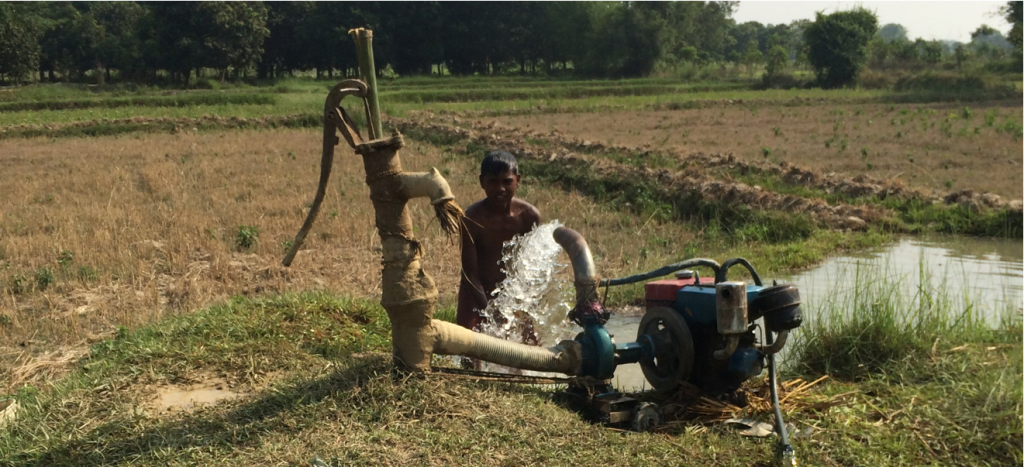As the team were visiting villages in the site selection phase of the project, they were asking the local community “What is the depth to ground water?” Many people were quick with a response, but the numbers seemed too high. The measurements that they were providing were in fact the total depth of the tubewells in the area.
The reason for the question was to see if end suction centrifugal pumps (commonly called surface pumps) would work throughout the dry season when the water table is lowest. The maximum theoretical depth that this type of pump can draw from is 9.8m below the centreline of the pump, and in reality this may be significantly reduced when we take into account the head (pressure) loss that takes place through friction in the suction line, the minor losses in the bends and constrictions, as well as the specific constraints of the pump set. Therefore, if the water table drops below say 7m or 8m, a surface pump won’t work, and a submersible pump will be required. Submersible pumps are often more expensive and more difficult to repair and maintain.
When the project team was in Madhubani District of Bihar in May this year, the question was asked “Do we need to use submersible pumps, or is a surface pump adequate?” To answer this question, the team undertook a simple experiment to measure the standing water level in a tubewell, and then pumped the tubewell for 6 hours to measure how far the water draws down and how quickly the tubewell can recover. The results for the experiment will be written up soon, so watch this space.






